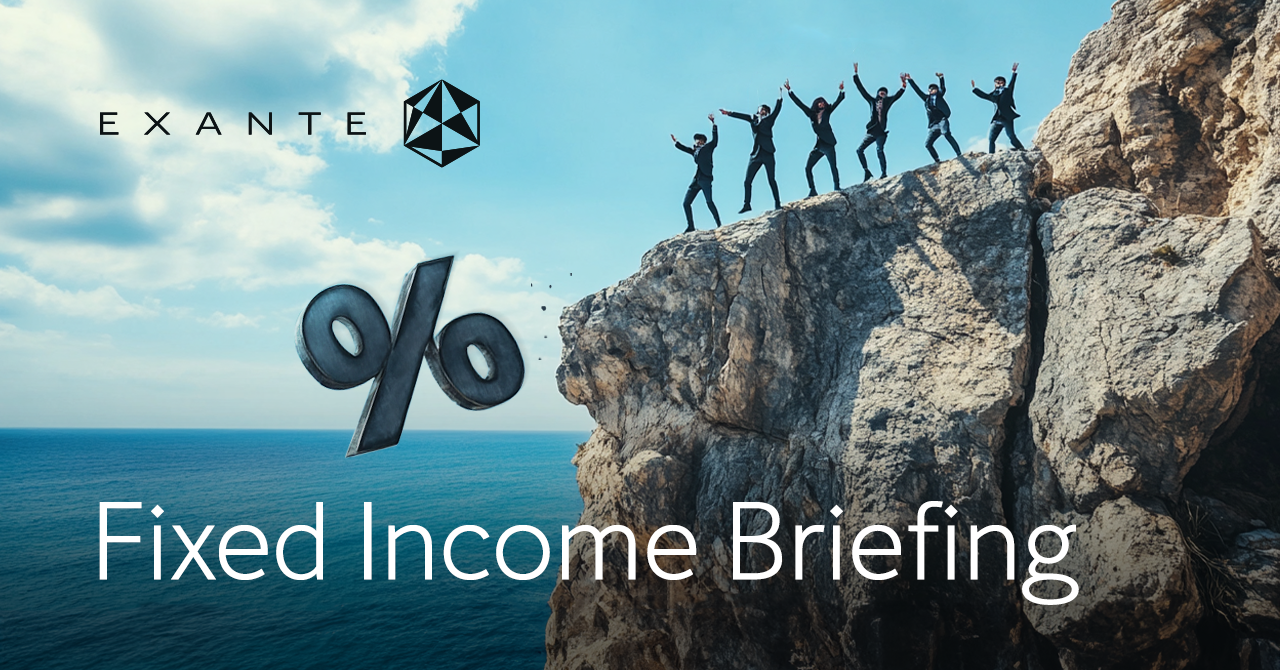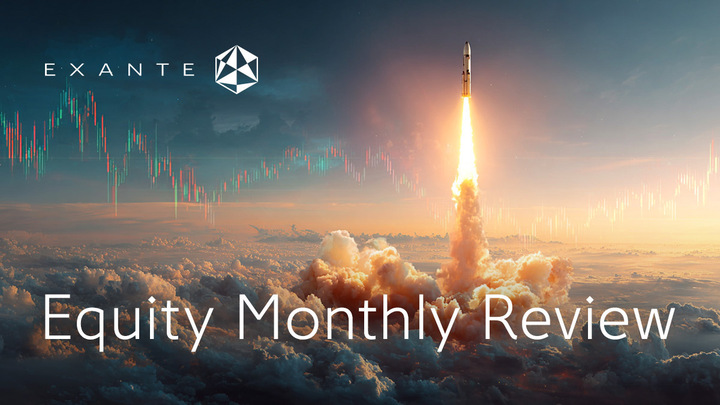
Fixed Income Briefing May 2025
Insights17:48, May 29, 2025

- May has seen US and global yields steepening, particularly after rating agency Moody’s cut the US long term rating to from AAA to Aa1. This was particularly evident in the US when a $16 billion offering of 20-year bonds on 21 May experienced very subdued demand, with the bid to cover ratio at 2.46x, marking the weakest demand since February. This reflects investor apprehension regarding the nation's escalating debt.
- However, the Fed is widely expected to hold rates at its next meeting on 17-18 June. The FOMC minutes from its 6-7 May meeting revealed Fed policymakers acknowledging they could face difficult tradeoffs in coming months due to rising inflation alongside rising unemployment and financial market volatility. Fed funds futures traders are anticipating 47.7 bps of rate cuts this year. According to the CME FedWatch Tool, there is only a 2.3% chance of a 25-basis-point cut at the June meeting. A rate cut is now expected at the FOMC 17th September meeting; interest rate swaps assign a 59.7% probability that the Fed will ease by 25 bps at that meeting.
- Despite the dollar experiencing significant fluctuations throughout the month, the dollar index for May is +0.28% MTD. The dollar’s volatility has been due to uncertainty over US tariffs, a ratings downgrade, and rising investor concerns around debt sustainability given projected rise in the US debt to GDP level and the budget deficit following the passage by the US House of Representatives of President Trump’s tax bill last week. The nonpartisan Congressional Budget Office has estimated that the current bill will add about $3.8 trillion to the federal government's $36.2 trillion in debt over the next decade. The bill still has to be approved by the US Senate, it is likely to face both attempts of a rewrite by some centrist Republican senators or a filibuster from Democrats. According to The Hill, some Republican senators are vowing to rewrite the bill, but they’re still weeks away from putting together a package that can muster the 51 votes it needs to pass any bill. President Trump said on Wednesday, 28 May, that he will now negotiate aspects of the "big, beautiful tax bill” to secure sufficient support for the bill's passage in the Senate.
- The US labour market continued to show strength in April with nonfarm payrolls increasing a seasonally adjusted 177,000 for the month, slightly below the downwardly revised 185,000. Nevertheless, the labour market is showing continuing resilience in the face of trade policy uncertainties and resulting market volatility. The unemployment rate remained steady at 4.2% in April. Average hourly earnings grew by a modest 0.2% m/o/m and 3.8% y/o/y. The labour force participation rate, at 62.6%, and the employment-population ratio, at 60.0%, remained largely unchanged in April. However, private payrolls grew by just 62,000 in April, far fewer than the 115,000 expected and below the 147,000 new jobs added in March. It was the softest increase since July of last year. Headline inflation rose by 0.2% m/o/m, up from March’s 0.1%, while core CPI, excluding food and energy, was up 0.2%, and down from February’s 0.2%. Headline CPI came in at 2.3% y/o/y in April, down from March’s 2.4% and the lowest since February 2021. Core CPI remained unchanged y/o/y from March, coming in at 2.8% in April. The Fed’s favourite inflation gauge, the Core Personal Consumption Expenditures (PCE) Price Index, came in at 2.6% in March, down from the 3% increase reported in February. Consumer spending, which accounts for more than two-thirds of US economic activity, surged 0.7% in March after an upwardly revised 0.5% gain in February. Personal consumption expenditures increased 1.8% in Q1, the slowest quarterly gain since Q2 of 2023 and down from a 4% gain in Q4 2024. Investors will be looking to the next release of Core PCE data on 30 May 2025 for indications of future Fed policy.
- On the growth front May Flash PMIs showed the US economy still performing, but confidence falling. The Flash Composite PMI in May came in at 52.1, up from April’s 50.6 and a 2-month high. The Flash services PMi came in at 51.2, up from April’s 50.8 and another 2-month high. The Flash Manufacturing PMI improved, coming in at 50.7, up from March’s 50.2 and a 2-month high. However, as noted by S&P, sentiment among companies about their output over the coming year was buoyed in part by reduced trade worries accompanying improved economic growth prospects. Confidence about the outlook rose to a four-month high in services and the best in three months in manufacturing. Chris Williamson, Chief Business Economist at S&P Global Market Intelligence, said, “Both sentiment and output growth remain relatively subdued, and at least some of the upturn in May can be linked to companies and their customers seeking to front-run further possible tariff-related issues, most notably the potential for future tariff hikes after the 90-day pause lapses in July. In particular, concerns over tariff-related supply shortages and price rises led to the largest accumulation of input inventories recorded since survey data were first available 18 years ago.” He noted that supply chain delays are now more prevalent than at any time since the pandemic, with prices charged for both goods and services spiking higher as firms and their suppliers seek to pass on tariff levies to customers. He also said, “The overall rise in prices charged for goods and services in May was the steepest since August 2022, which is indicative of consumer price inflation moving sharply higher.”
- Consumers are also feeling more confident. The Conference Board's consumer confidence index increased by 12.3 points in May to 98.0, up from 85.7 in April. The Present Situation Index—based on consumers’ assessment of current business and labour market conditions—rose 4.8 points to 135.9. The Expectations Index—based on consumers’ short-term outlook for income, business, and labour market conditions—surged 17.4 points to 72.8, but remained below the threshold of 80, which typically signals a recession ahead. The University of Michigan consumer sentiment survey dropped to 50.8, a decrease from April’s 52.2. This decline was attributed to concerns about rising inflation, with consumers' 12-month inflation expectations rising to 7.3% from 6.5% in April. Tariffs were a significant issue for consumers, and were mentioned by nearly three-quarters of consumers, up from almost 60% in April. Consumers anticipated inflation to rise at an annual rate of 4.6% over the next five to 10 years.
This article is provided to you for informational purposes only and should not be regarded as an offer or solicitation of an offer to buy or sell any investments or related services that may be referenced here. Trading financial instruments involves significant risk of loss and may not be suitable for all investors. Past performance is not a reliable indicator of future performance.




